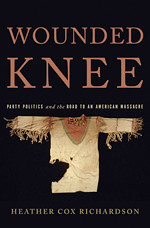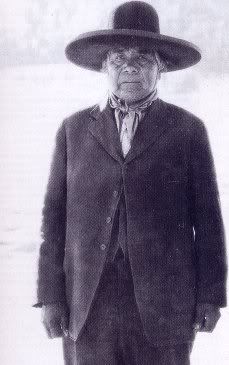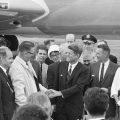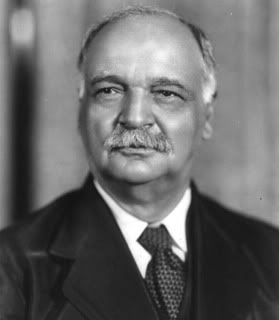( – promoted by oke)
 There are perhaps three major military conflicts between American Indians and the American military which have entered into popular culture through movies, novels, and popular histories. These would include the battle at the Greasy Grass, also known as the Little Bighorn, where Lt. Col. George Custer was defeated; the 1877 Nez Perce War, which was supposedly led by Chief Joseph; and finally there is Wounded Knee, sometimes called a massacre, sometimes called a battle. The books written about these events are often aimed at romanticizing the Indians, romanticizing the military, and/or presenting a military history of the battle. It is rare for any of these conflicts to be placed in a larger context of either Indian history or American history.
There are perhaps three major military conflicts between American Indians and the American military which have entered into popular culture through movies, novels, and popular histories. These would include the battle at the Greasy Grass, also known as the Little Bighorn, where Lt. Col. George Custer was defeated; the 1877 Nez Perce War, which was supposedly led by Chief Joseph; and finally there is Wounded Knee, sometimes called a massacre, sometimes called a battle. The books written about these events are often aimed at romanticizing the Indians, romanticizing the military, and/or presenting a military history of the battle. It is rare for any of these conflicts to be placed in a larger context of either Indian history or American history.
Heather Cox Richardson’s Wounded Knee: Party Politics and the Road to an American Massacre is a book which should be read by all progressives, not because it is about American Indians, or the massacre at Wounded Knee, but because it provides insights into the consequences of partisan politics which are similar to today’s events.
For those interested in American Indian history, the book provides a good overview of the conflicts between the Sioux and the American government. This overview is not limited to Wounded Knee, but also includes Red Cloud’s War and the American obsession with gold and private property. It also provides some good insights into the nineteenth century reservation system, including the arguments over whether Indian Affairs belonged in the Interior Department or the War Department.
Religious freedom is aspect of the conflict at Wounded Knee. The Indian agent, called Young-Man-Afraid-of-Indians by the Sioux, hit the panic button when he heard about the Ghost Dance. Professor Richardson does a good job of telling the story of Wovoka’s Ghost Dance movement without relying on the imaginative tales told in the nineteenth century popular press.
With regard to the battle, Professor Richardson points out:
“This had been the largest military mobilization of the U.S. Army since the Civil War, involving fully a third of the army. About nine thousand soldiers moved to South Dakota: of those, about five thousand had been stationed at the Pine Ridge agency.”
With regard to the political motivation of this military deployment, she points out:
“Troops brought contracts and government money into the chronically poor West, money that would be most welcome in the current economic depression there. Troop deployment would also show that the administration was looking out for the settlers, promoting their welfare as it had indicated it would do when it pushed so hard for western development.”
Overall, the book looks at Wounded Knee as a part of a larger political process, which is only partly centered on American Indians.
The author points out that:
“Republicans maintained that economic growth created jobs and fueled an ever higher standard of living, pointing to the fabulous houses of the nation’s rich and the increasing wealth evident, for example, in Mrs. Harrison’s jewels, as proof that their system worked. Their opponents, Democrats and members of various reform parties, countered by pointing to falling wages, child labor, and city tenements as evidence that the system was broken.”
‘Individualism, Private Property, the Law of Accumulation of Wealth, and the Law of Competition’ were the very height of human achievement, multimillionaire steel baron Andrew Carnegie cheerfully pronounced.”
“Republicans had adopted into their political worldview the idea that the government’s role was to promote business, and they legislated to do just that. Economic development, they argued, would promote the good of all Americans.”
“The Harrison Republicans were consummate party politicians, willing to ignore reality, manipulate government machinery to stay in power, and destroy those in the way of their plans.”
“Anyone opposing the Republicans’ extreme pro-business policy opposed America, Republicans believed, and must be silenced.”
The political philosophies of the nineteenth century Republicans sound vaguely familiar, like something you could hear on Fox News any night of the week.
I hope that Professor Richardson has a second book in mind, one which looks at the impact of economic philosophies upon American Indian nations during the nineteenth and twentieth centuries. I would like to see her follow up on this statement:
“Late nineteenth-century Republicans’ emphasis on specific kinds of economic development ultimately crippled Sioux success in the American economy.”
Remove the word “Sioux” and substitute “Indian” and then document how Republican concepts supporting big business have aided poverty on reservations around the country. This is just a hint that I think Professor Richardson should put the economic development of Indian reservations into this larger picture.




Leave a Reply